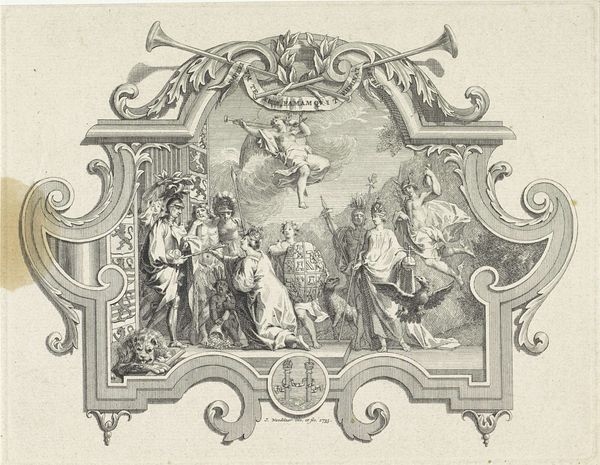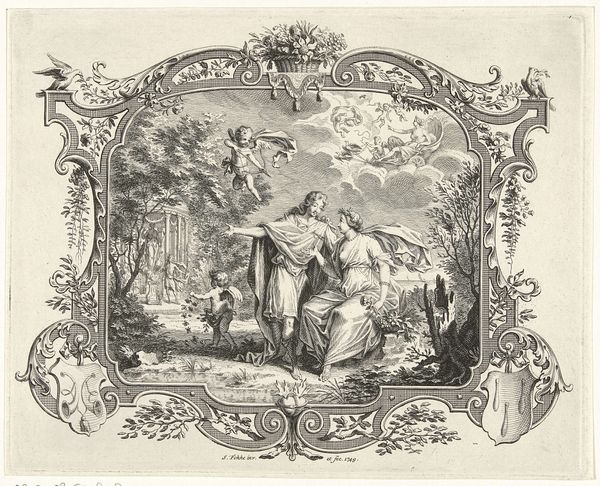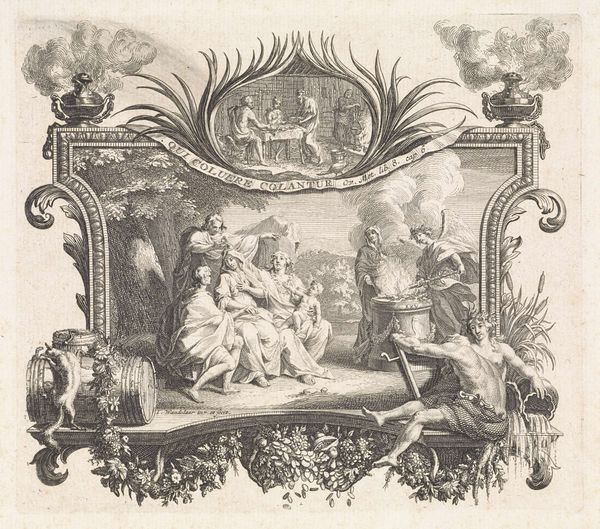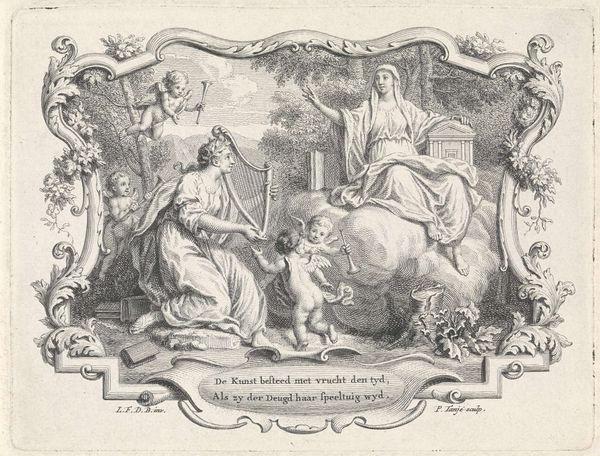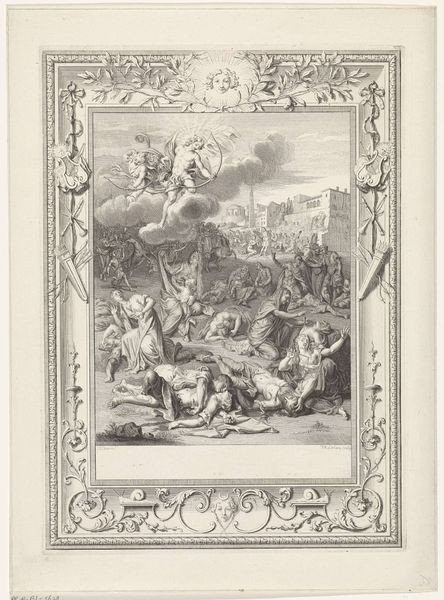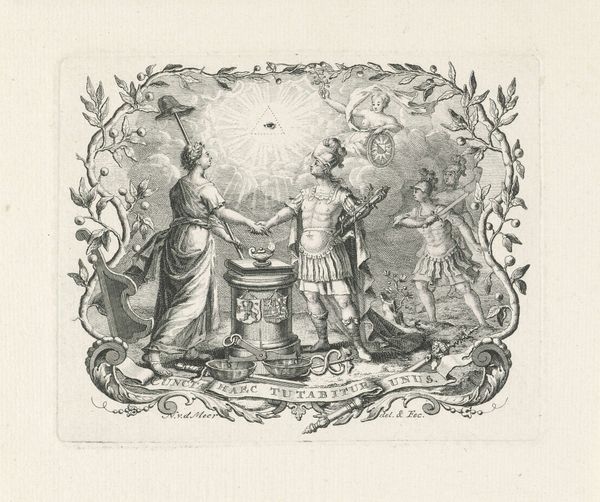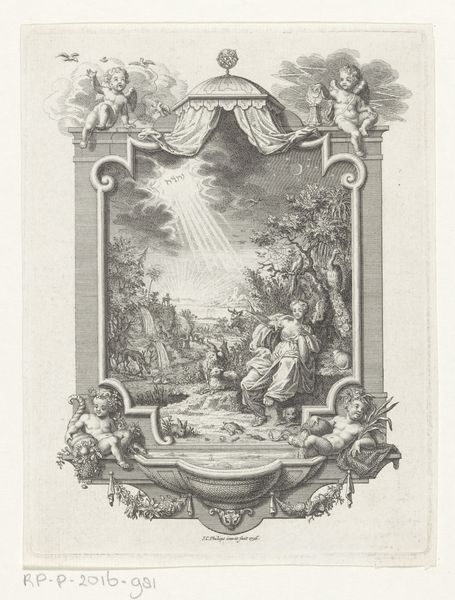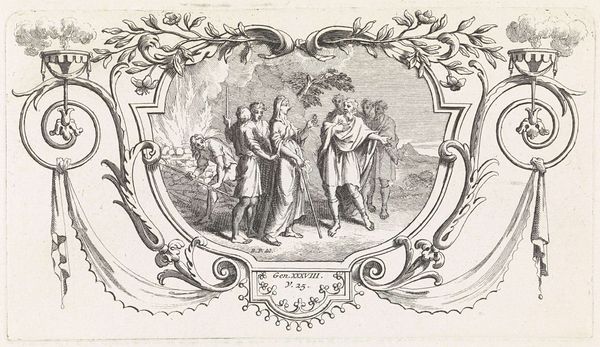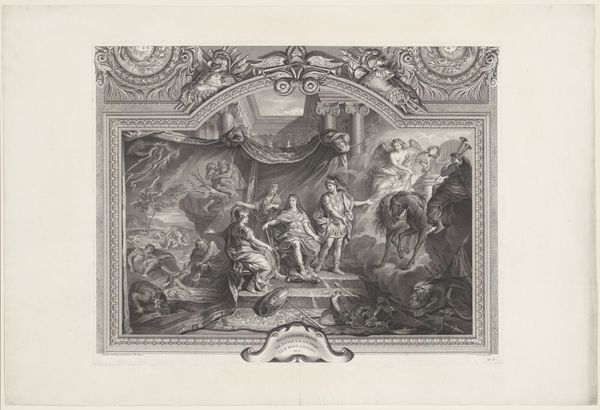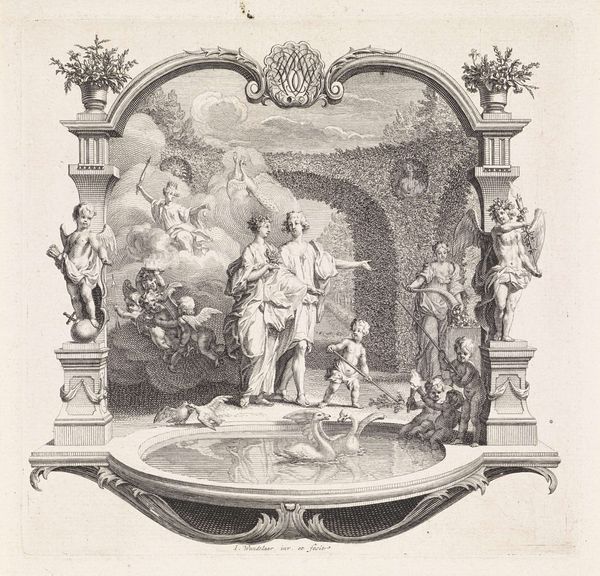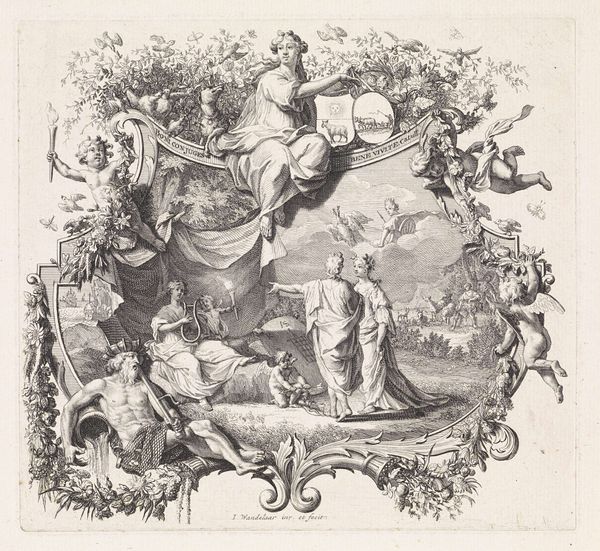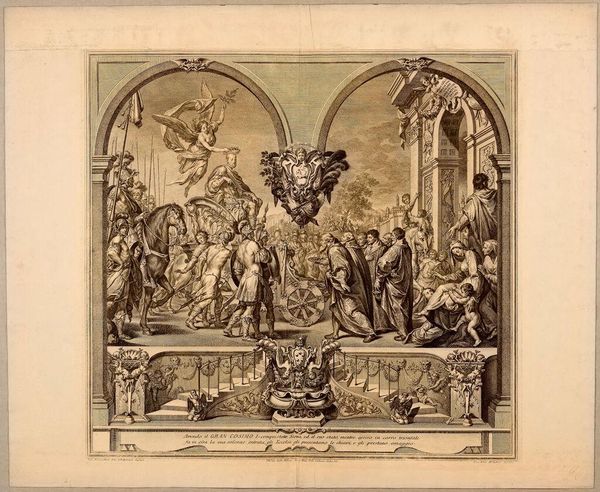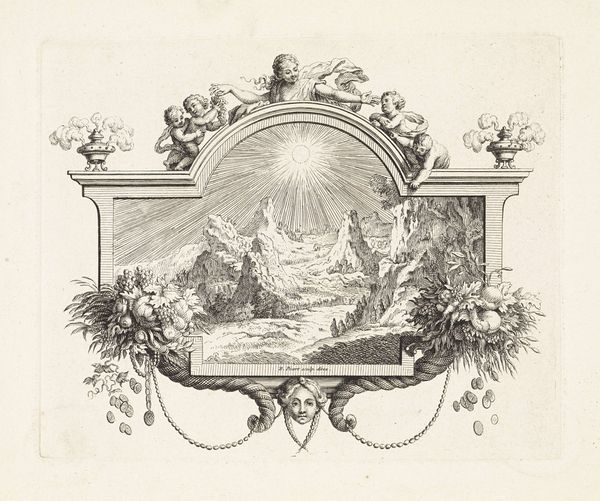
engraving
#
allegory
#
baroque
#
old engraving style
#
history-painting
#
engraving
Dimensions: height 130 mm, width 171 mm
Copyright: Rijks Museum: Open Domain
Curator: Right, let’s talk about this engraving, "Allegory on Marriage," made by Simon Fokke in 1748. What’s your first take? Editor: It's bursting with movement, yet feels incredibly…controlled. A staged happiness, maybe? Like everyone's performing for the cherubic audience. And, the detail, I feel almost claustrophobic. Curator: That detail is quintessential Baroque, wouldn’t you agree? It's overflowing with symbolism tied to the social expectations of marriage. This wasn’t just about two people; it was about families, wealth, and societal order. Engravings like this were essentially public declarations. Editor: Declarations presented through dense clouds of visual metaphor. I mean, the central couple are flanked by cherubs leading a lamb? I take that as a sacrificial virtue expected by the bride and the groom Curator: Precisely! The lamb is all innocence. Notice the figure seated in the clouds above, crowning them both. This evokes, I believe, how the marriage is divinely sanctioned, further reinforcing its solemnity and importance. The drama plays out for generations after the union as offsprings. Editor: I am sensing the image is trying to tell me something of virtue. Yet there's also something rather unnerving in the whole composition—all this pressure neatly packaged. I keep looking at the male figure on the right gesturing with one hand in a somewhat affected posture and it seems like an admonition rather than affection, you know? It reminds me how these marital depictions weren't about love, but duty. Curator: Exactly! You've hit the crucial tension that exists within art. Art reveals power and moral values. And the power is revealed at its highest here. It's less about a passionate connection, but what duty could create or undo for social mobility. Editor: So, as a piece, its almost as much a warning label as a wedding announcement. Look closely! The woman leading them almost seems coerced to take his hands... The children scribbling on what I suppose is law or doctrine below on the right side of the tableau just adds another layer. It also asks me who is being educated: the newly weds? Curator: These scenes show the era when weddings were like mergers: social, and cultural contracts meant for the upward trajectory of both involved parties. This picture brings many of our own notions and preconceptions on love into doubt today, even more so for people getting ready to enter such contract with eyes wide shut... Editor: So true... Looking back on the print again, and hearing how marriages operated back then I am left wondering more what type of performance this image really documents... The power behind expectations is not romantic in the slightest. Thanks.
Comments
No comments
Be the first to comment and join the conversation on the ultimate creative platform.
